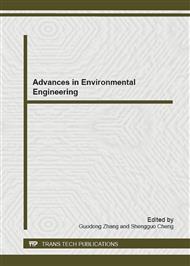p.100
p.104
p.108
p.114
p.118
p.124
p.128
p.132
p.137
Activity of Deinococcus radiodurans on Chromium Ions
Abstract:
This study investigated the resistance of Deinococcus radiodurans to Cr6+ and Cr3+, the redox activity of this bacterium for Cr6+ and Cr3+ and the contributions of various bacterial components to the observed chromium resistance. The results showed that at 0.2 and 0.5 mmol/L of Cr6+, D. radiodurans displayed high growth with an early logarithmic phase. This organism also exhibited moderate growth at 2 mmol/L Cr3+. This strain exhibited strong reduction activity against Cr6+. At 0.2 mmol/L Cr6+, the 8-hour Cr6+ clearance rate was 92.13%. However, the clearance rate decreased sharply with increasing concentrations of Cr6+. At 0.5 mmol/L Cr6+, the 24-hour clearance rate was only 32.81%. By studying the effects of the cellular environment and individual bacterial components on the level of Cr6+, we discovered that D. radiodurans counteracted the effects of Cr6+ primarily through reduction and secondarily through adsorption. The primary activity was found to occur in the extracellular space and the cell culture supernatant. D. radiodurans had no significant oxidation effects on Cr3+. In conclusion, this study showed that D. radiodurans strongly reduces and is highly tolerant of Cr6+ and that the primary reducing agent is secreted from the cell.
Info:
Periodical:
Pages:
118-123
Citation:
Online since:
November 2012
Authors:
Price:
Сopyright:
© 2012 Trans Tech Publications Ltd. All Rights Reserved
Share:
Citation:


